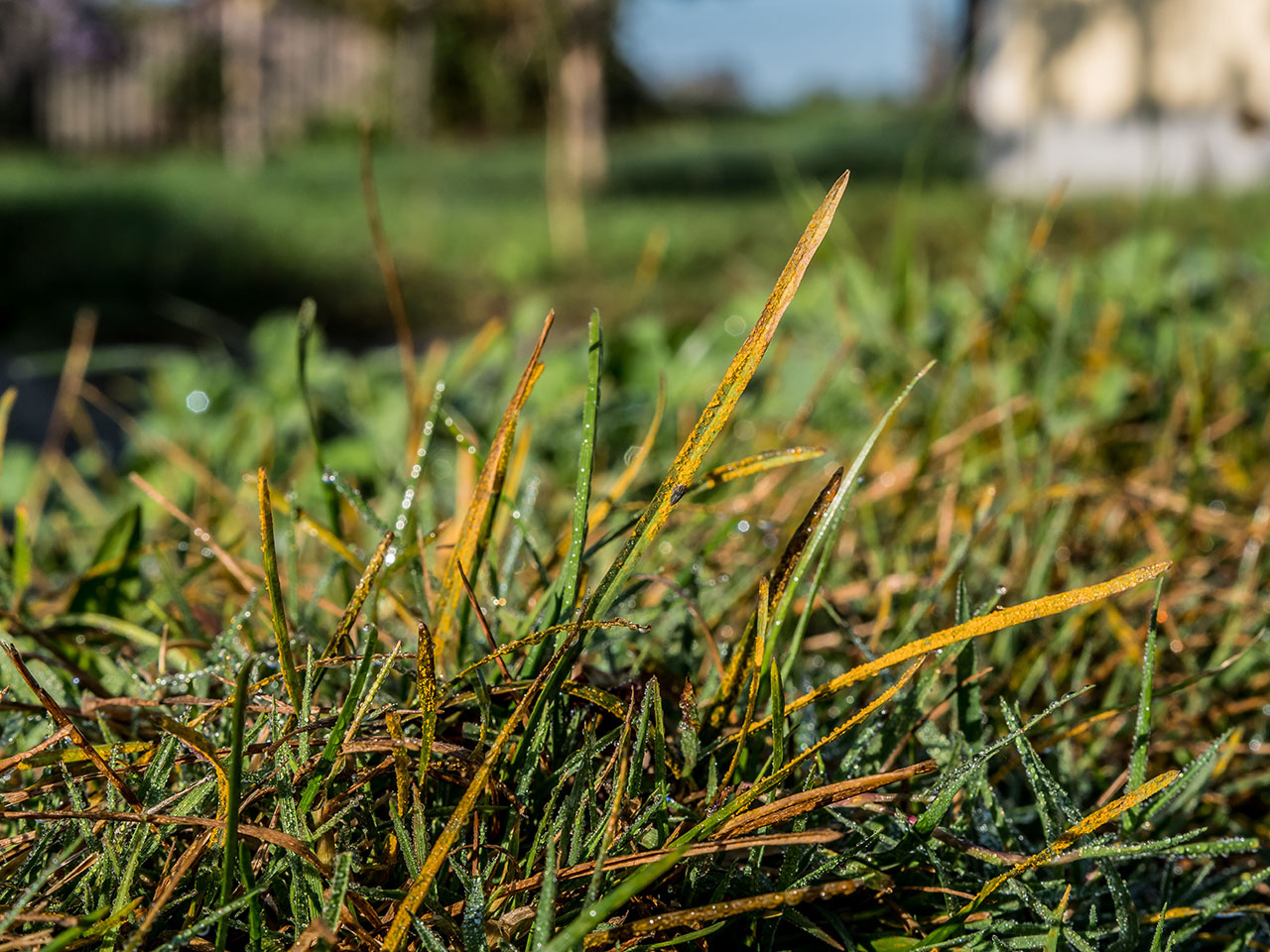A slight discolouration to the lawn from a distance, that unexplainable spider web look on the lawn as you head to work in the morning- a closer inspection has you taking photos and googling what you can do save your lawn from, well, god knows what. Lawn fungus can be frustrating and confusing, that’s why we’ve asked our lawn genius to step in and simplify it for everyone.
What causes disease in lawns?
Most lawn diseases you would have seen or heard of are caused by fungi. Fungi can vary greatly in size, so small you need a microscope to see them, all the way up to the delicious mushroom.
Fungi need chlorophyll to survive and, just like us, they get it from feeding on plant matter. Fungi however feed on both decaying plant matter and live plant matter aka your lawn.
There are over 100,000 types of fungi worldwide and they aren’t all bad. With that in mind we are probably lucky only a handful of these can affect our lawns.
Types of fungi
The fungi that attack our lawns (in order of most to least common) are:
- Leaf Spot Diseases like Helminthosporium, Dreschlera and Bipolaris
- Dollar Spot
- Winter Fusarium
- Grey Leaf Spot
- Fairy Ring
- Rust
- Brown Patch
- Couchgrass Decline
- Pythium
What allows them to infect your turf?
The smaller fungi can be transported incredibly easy, whether it be by insects, animals, machinery or even in small soil particles carried by wind and rain. Unfortunately, this means there’s a good chance you have more than a few, fun-guys, living in your lawn.
It’s understandable to think so if they have always been there, why haven’t I seen this before? Or why is my lawn disease worse than last year? Well, generally it’s because a perfect storm was created that allowed them to multiply to dangerous numbers and infect your turf.
The disease triangle is the best way to look at what allows fungi to become a nuisance in your lawn. The disease triangle consists of the 3 key factors that need to be present for your lawn to become infected with lawn diseases.
#1- Disease Present
It’s obvious right, you can’t have the disease without the causal fungi there. Unfortunately there isn’t a whole lot we can do in this area, fungi are great moving around. Our best defence here comes by applying a lawn fungicide such as Impala which can knock down numbers of the fungi keeping them nice and low.
#2- Susceptible Host
Here we are referring to your lawn, fungi can be fussy and won’t damage all lawn grasses. There are a number of things that make your lawn susceptible to fungi attack, the best thing you can do is have the right grass for your climate. After that there is a whole range of things that can put stress on your lawn making it susceptible to disease.
#3- Environment
The environment significantly impacts on the health of your lawn and the rate at which the fungi can grow. So this includes whether it’s hot or cold, whether your lawn is shaded, dry or wet and even how long the leaf is wet for.
What can we do?
When fighting fungi it’s important to remember the disease triangle. Our goal is to interrupt the disease triangle as best we can, these means not only knocking down numbers with a lawn fungicide but also implementing some changes to our lawn to make sure it’s less susceptible.
To make it incredibly easy we have put together a downloadable table for you to print out and help with diagnosis, simply add your name and email and we will send it to you.
Is it really disease?
Care should be taken to correctly identify which fungi is attacking your lawn, after all, unhealthy turf can be caused by a multiple of things, weather, insects and even poor application.
The Lawn Shed — your expert guide for all things lawn
Whether you’re wondering how to treat your lawn disease or how to diagnose insect damage The Lawn Shed has all the products, hints and tips you need to keep your greenery thriving. Have a burning question about your turf? Consult the lawn genius today!

